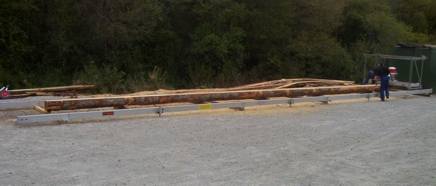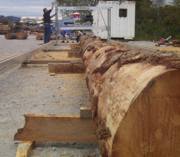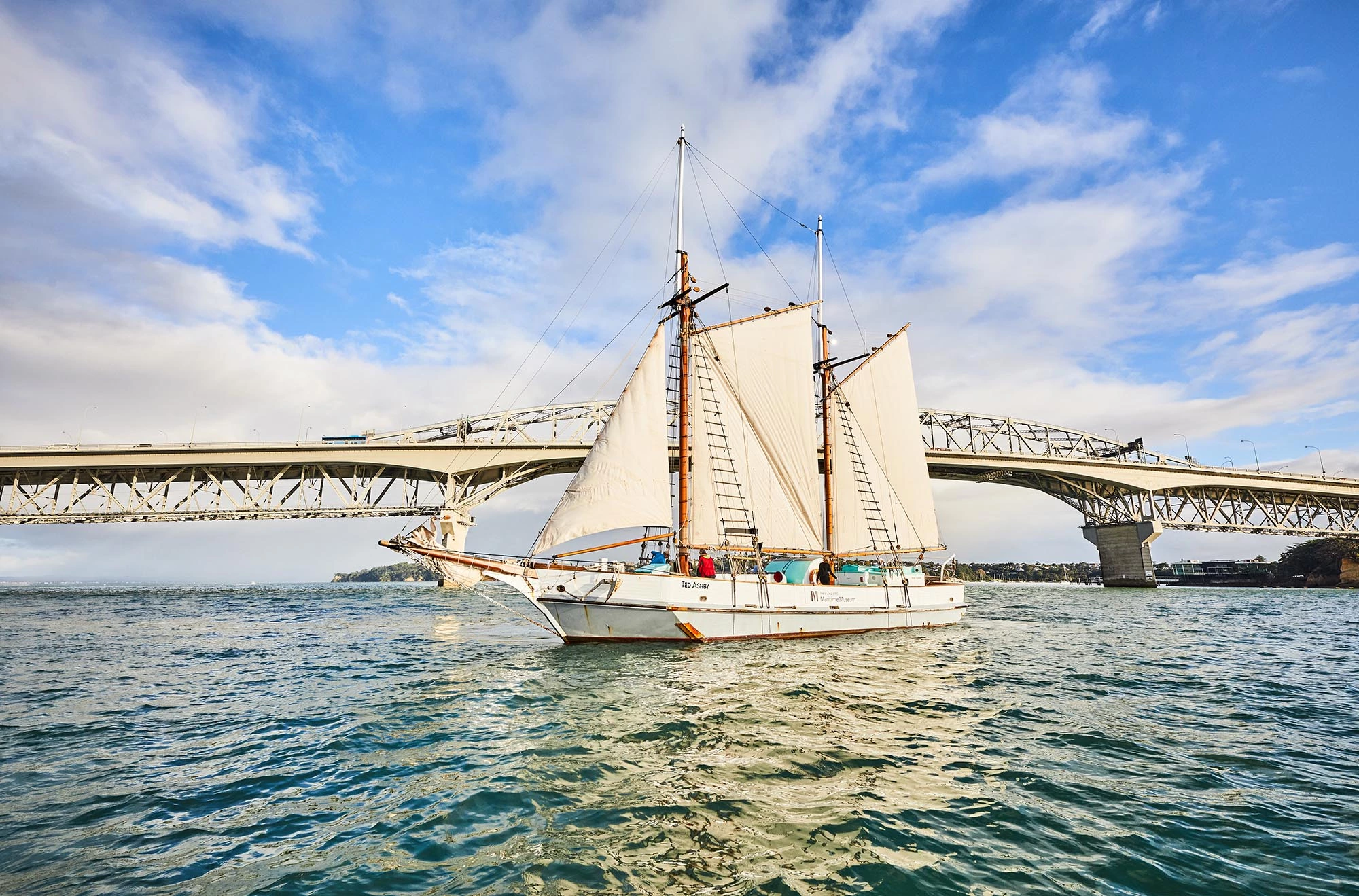By Mike Mather in Rotorua, And Ian Stuart of NZPA
Rotorua forestry experts have combined their skills and knowledge on a project to build a rare ship mast.
The Auckland Maritime Museum’s flat-bottomed scow Ted Ashby, needed new 13 and 14m high masts made of Douglas fir.
The 17m scow was built by the National Maritime Museum in 1992 from original plans and has been sailing around Auckland’s Waitemata Harbour and the Hauraki Gulf on charter trips.
However, the laminated Douglas fir masts which were made from demolition material urgently needed replacing, prompting a project that has seen those in Rotorua’s forestry industry pitching in to help.
The museum had hired shipwright Colin Brown to make two new masts from trees felled in Kaingaroa Timberlands forests near Rotorua.
But finding the trees – and the skills to shape the new masts in keeping with the traditions of the gaff-rigged scow – had been a mission, vessel co-ordinator, Richard Pomeroy said.
Suitable trees were known to grow in Rotorua, the top of the South Island, Canterbury and Otago but the South Island trees were ruled out because of the cost of transporting them to Auckland.
Ken Read of Kaingaroa Timberlands had been instrumental in finding a range of suitable trees, while Forest Research scientists Leith Knowles, Kane Fleet and Mark Miller tested the trees to find the best ones for remasting the ship.
Kauri was originally used for scow’s masts but Mr Pomeroy said because Kauri was now protected an alternative had to be found.
This was probably the first time in 50 years a scow has been remasted in New Zealand.
Mr Pomeroy said the trees had recently been felled and Mr Brown was about to start the traditional task of ‘flitching’, which involved making a round tree trunk into a square length of timber.
“It sounds weird,” he said.
“The boatbuilder actually makes the tree square and then lines it up, which means putting a building line from one end to the other, and chalks it up. From the square he reduces it to an octagon and then takes those corners off and gives it 16 sides and gradually makes it round again.”
Mr Pomeroy said flitching allowed the shipwright to produce a straight and true mast.
The logs were being milled at the Peterson Portable Sawmills plant in Rotorua. The masts would be dried in Rotorua, a process that could take several months before they could be treated and stepped in the scow, Mr Pomeroy said.
Forestry Research scientist Dr Mick Hedley was organizing the log drying process, a huge exercise that would take place at the Rotorua institute, Cameron Scott of local firm Kop-Coat was helping with the preservation process.
Rotorua Forest Haulage’s Tony Sargison had also lent his support transporting the logs from place to place.
“It’s seemed to me like the whole of Rotorua has been involved,” Mr Pomeroy said. “We have been blown away. It might be a vessel from Auckland, but this has really become a Rotorua project. Everyone has come to the party.”
He said the new masts could cost NZ$20,000 but much of that had been provided by the “wonderful” people of Rotorua.
In the meantime the Ted Ashby was still working on the harbour, taking charter groups and school children out under motor power.


Ted Ashby was the newest scow in the country but builders in 1992 followed the plans of the original flat-bottomed scows, scores of which plied the shallow waters around New Zealand in the late 1800’s and the first 25 years of the last century.
With few roads and the limited rail system in pioneer New Zealand scows were the only way of transporting cargo around the country.
With the keel up the scows could draw as little as 60cm, which gave them access to many estuaries and rivers for loading and unloading. However the little ships were uncomfortable in a heavy sea.

